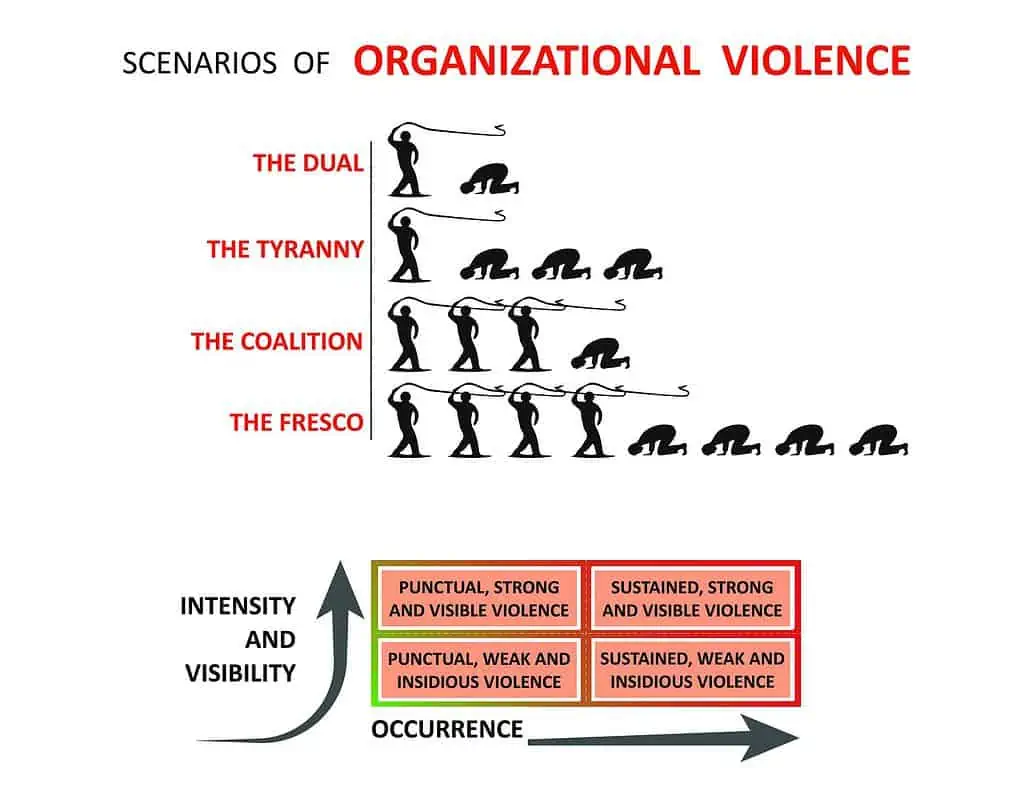My last article discussed the four phases of the Cycle of Violence: accumulation, explosion, the “honeymoon phase” and the justification phase I refer to as “But, it’s your fault.” It’s an endless cycle unless the victim protects themself and asks for help to escape this infernal whirlwind. Let us now look at the categories of this scourge.
Many people, as well as traditional and social media, incorporate violent behaviour into content on the internet, on television, in video games and in professional sports. It can also be found in groups like involuntary celibate (Incel), unemployment, feminism and masculinism, urban frustrations, insanity, genetics, homosexuality, nationalism, racism and religion. Don’t forget a person’s gender. Stunning, isn’t it?
While it is important to be aware of these realities, one must be able to identify what is happening, to protect oneself and to denounce violence when it worries us. As “they” say, “Silence implies consent,” and the aggressor validates themselves through our silence. Let us therefore examine this scourge that generates so much powerlessness and suffering whether it is imposed on a community, on people in a given space, or individually at home, at work or in a social space …
“Violence is defined as the abusive use of power by which an individual in a position of force aims to control another person by using different strategies in order to maintain this person in a position of inferiority or to compel this person to adopt behaviours in accordance with the individual’s own desires. Because violence can be exerted in larger systems, this definition is not limited to individual conduct but also includes violence imposed by social and structural systems.” (CRI-VIFF, Laval University, Qc, 2018)
I would like to specify that the individual—or organization—perceives itself to be in a position of psychological, physical, or economic strength (or a combination of the three) even if the reality is quite different. According to Ganley & Harris (1986), all forms of violence have common characteristics. For example, the aggressor does not consider, or barely recognizes, the consequences and destructive impact of their behaviour on their victim’s emotions—a clear sign of recidivism. This violence is intended to control and dominate the victim; episodes are always recurring and increasing in frequency and intensity.
In my opinion, the parties involved, as much the aggressor and the victim (the who) and location(the where) establish how the violence is categorized. Further, the intensity of the victim’s emotions determines the gravity of the violent act’s consequences—regardless of the aggressor’s imaginative style of thinking: It wasn’t my fault, I was tired, I was drunk—and so on.
There are three categories of violence:
1. Affective violence“This kind of violence is “coated” in affection, and sometimes also sexuality, whether it is between current or former partners, involving children or teenagers in situations where the relationship is unequal, by acquaintances or strangers, or family members such as a brother, a sister, a mother, a father, and grandparents. Since false affection is at the heart of the aggressor’s control, this category includes conjugal violence, family violence, and elder abuse. It s very serious. Some specialists even discuss intimate terrorism as it relates to conjugal situations and, thus, affective terrorism.” (Johnson, Leone and Xu, Pa, 2014)
2. Organizational (or professional) violenceOrganizational (or professional) violence occurs in relation to employment, or when someone is working with the expectation of a specific economic gain or a form of recognition, as well as incases of exchanges of services, such as volunteerism. Aggressors may be found within an organization (bosses or colleagues) as well as outside it (clients).
According to Damant, Dompierre et Jauvin (La violence en milieu de travail: tolérance zéro, CSN, QC 1997), organizational violence—chiefly psychological in nature—primarily occurs in the following four formats:
i. A superior aim at a worker
ii. A superior aim at multiple workers
iii. Multiple superior aims at a single victim
iv. Multiple superiors aim at multiple workers
There are specifically four types of professional violence that demonstrate its intensity:i. Intermittent — Very intense and visible
ii. Sustained — Very intense and visible
iii. Intermittent — Less intense and subtle
iv. Sustained — Less intense and subtle
This last form of professional violence is the most harmful since victims could sink into isolation, depression and other important mental, financial, familial and social imbalance.
The phenomenon of a group ganging up on someone in a sort of “workplace terrorism” is called mobbing. It has severe consequences that could include psychological distress, absenteeism, sick leave, workplace injuries or criminal acts.
“A poor work environment does not just have enormous costs for the business itself, but for society as a whole. The total cost of supporting victims, whether by health care organizations or directly by the community, amounts to billions of dollars.” (Leymann, 1996) [translated]
3. Social violence
Generally speaking, social as well as political control develops as the result of the victimization of one or more individuals in a society. For example, in a neighbourhood, or at school (bullying),in certain sports, or in a more-structured manner within criminal organizations. I also attribute this form of violence to conflicts stoked by weapons manufacturers, in situations where professional negligence causes death (such as a contaminated blood scandal where no guilty party is sent to prison), or in cases involving religious fundamentalism (such as Canada’s residential school system) or sectarian conflict.
Social violence can also create exclusion based on race, skin colour, gender (such as wageinequality between men and women), identity, pregnancy, sexual orientation (LGBTQIA+), civil status, age, religion, political beliefs, languageskills, ethnicity (First Nations, gypsies, Kurds), a mental or physical handicap, and social status.The phenomenon of social mobbing also manifests in certain cases.
In summary …
There are three categories of violence: affective, organizational and social.
This classification builds on the description of the Cycle of Violence from my first article. In my next column, I will describe the four forms and the five principles (or foundations) of violence. I hope that I will reduce your fear of all expressions of violence and this information will transform your way of thinking if ever you are confronted or if aggression seems ready to explode to the detriment of one or more victims.





